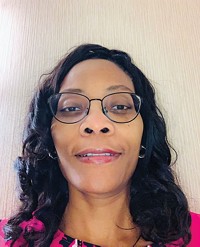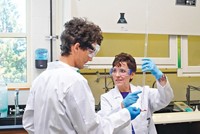Advertisement
Grab your lab coat. Let's get started
Welcome!
Welcome!
Create an account below to get 6 C&EN articles per month, receive newsletters and more - all free.
It seems this is your first time logging in online. Please enter the following information to continue.
As an ACS member you automatically get access to this site. All we need is few more details to create your reading experience.
Not you? Sign in with a different account.
Not you? Sign in with a different account.
ERROR 1
ERROR 1
ERROR 2
ERROR 2
ERROR 2
ERROR 2
ERROR 2
Password and Confirm password must match.
If you have an ACS member number, please enter it here so we can link this account to your membership. (optional)
ERROR 2
ACS values your privacy. By submitting your information, you are gaining access to C&EN and subscribing to our weekly newsletter. We use the information you provide to make your reading experience better, and we will never sell your data to third party members.
Policy
Project SEED: How To Get Involved
by Philip Bays, Chair, ACS Committee on Project SEED
November 20, 2006
| A version of this story appeared in
Volume 84, Issue 47

"I want to mentor a talented economically disadvantaged high school student through Project SEED. What do I do?"
At the fall American Chemical Society national meeting in San Francisco, it became clear to the Committee on Project SEED that many potential mentors do not participate in the program because they do not know how. The purpose of this article is to provide a nuts-and-bolts description of what you need to do. We hope that it will result in many more mentors for the coming summer.
What is necessary for a successful Project SEED program? Four things: a mentor, a research project, a student, and some funding. The Project SEED office at ACS and the Project SEED Committee are willing to help on all four of these.
» The mentor. We hope that is you! You will be willing to supervise a high school student in the lab for eight to 10 weeks during the summer. The students will have had at least one year of high school chemistry, but they will need an introduction to the project and laboratory instruction as they begin their hands-on experimental work. Many mentors have found it useful to pair two SEED students or a SEED student with an undergraduate or graduate student or a laboratory technician.
» The project. The Committee has four criteria for the project: Is it chemistry? Is it research? Is it appropriate for a high school student? Is it safe? We define chemistry very broadly and have approved projects in the traditional areas of chemistry and biochemistry as well as molecular biology and chemical engineering.
We also define research rather broadly. We do not want students to simply be dishwashers. They should be collecting data, interpreting it, learning chemistry, and improving laboratory technique. In many cases, their work is part of a larger research project that may ultimately be publishable.
In terms of appropriateness, we rarely see a project that is inappropriate for a high school student with proper mentoring. If you visit the Project SEED poster session at any national meeting, I am sure you will be as amazed as I at how much these students can learn about some very sophisticated chemistry in a summer. We insist that the project be safe and that adequate safety training be given. We have, for example, routinely turned down projects in which the high school student will be working with ethidium bromide.
» The student. We have found that the best way to find a student is through a high school chemistry teacher, particularly one in an economically disadvantaged school district. The student's family must verify that its income is not more than 200% of the government poverty definition. And the student must have had a year of chemistry and have done reasonably well.
» The funding. For 2007, Project SEED I student stipends will be $2,500 and Project SEED II students will receive $3,000. Guidelines call for the mentor to find 50% of the stipend support; however, the committee has historically funded many programs that provide less matching support. The ACS Development Office is working with us to find funding for as many students as possible. For the coming summer, we will make every effort to provide full funding for new mentors.
So you want to be a mentor, you have a research project, you may even have a student, and you have funding. Now what? First, contact the Project SEED office at ACS. If you are in an area where there is an ongoing SEED program, we can put you in touch with the coordinator. If you are not in such an area, we can put you in touch with someone who can guide you through the application process.
Second, submit a project application through the Project SEED website. There, you will find an application form that you may fill out online. It will ask you about your project, what the student will be doing, and about any safety considerations. Those submissions are due by Feb. 5, 2007. The committee completes evaluation and approval of projects in March, prior to the spring ACS meeting. You do not need to have a student identified when you submit the project application. If your project is approved, you can find the student and submit his or her verification of eligibility by June 4, before the student begins working on a project.
I hope that this has provided a basic introduction to how to become a Project SEED mentor. For those who have read this far but who cannot be a mentor, there are other ways to be involved, including but not exclusively through your financial support. Please use the Project SEED check-off on your dues notice to support this great program.
You may learn more about becoming a SEED mentor or coordinator by visiting chemistry.org/education/seed.html or contacting Raihanah Rasheed at r_rasheed@acs.org or (800) 227-5558 ext. 4380.
Views expressed on this page are those of the author and not necessarily those of ACS.




Join the conversation
Contact the reporter
Submit a Letter to the Editor for publication
Engage with us on Twitter